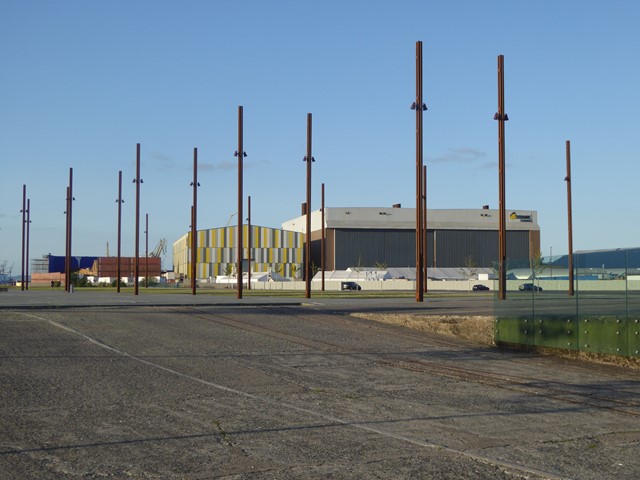
The building also provides for educational, social activity, retail trade and restaurants, as well as a public resource center. On the top floor of the museum is the largest conference and reception hall in Belfast, Astor Suite, a banquet complex that can accommodate 750 people.
#TITANIC AND OLYMPIC SLIPWAYS SERIES#
Its center is a series of explanatory galleries to study aspects of the construction, design, flooding and heritage of the Titanic. The interior of the five-story building has 12 thousand square meters of space. Building height 126 ft (38 m), ta the same height as the Titanic’s case. With just one year to go until the Titanic disaster centenary, are Belfast's big projects on course ?, Belfast Telegraph (April 15, 2011). Most of the building’s façade is covered with 3000 single silver anodized aluminum tiles. Its angular shape resembles the shape of the noses of ships, with its main “nose” between the Titanic and Olympic slipways on the Lagan River (In addition, it was suggested that the building looks like an iceberg, and the locals nicknamed it Iceberg. The construction of the building aims to reflect the history of Belfast in the shipbuilding and industrial heritage abandoned by Harland and Wolf. Įric Kuhne and Associates has been tasked with working as lead concept architects.

This is part of the Reconstruction of the Titanic’s relevance to the Titanic’s legacy in the Titanic Quarter, including the abandoned headquarters and drawing offices of Harland and Wolf, Nomadik - the last remaining White Star Line ship, as well as Hamilton dock, Titanic dock, pumping and slipway "Olympic" and "Titanic". It is assumed that it will serve a similar function as the Guggenheim Museum in Bilbao, designed by Frank Gehry, as a center for the revival of the city. The building, now known as the Titanic Belfast, is expected to attract 400,000 visitors a year, of which 130,000–165,000 will come from outside Northern Ireland. The task of attracting visitors was entrusted to the charity Titanic Foundation, which seeks to "educate people about the social, historical, industrial and marine heritage of Belfast through the history of the Titanic". Additional funding was pledged to Belfast. Northern Ireland Tourism Secretary Arlene Foster announced that the Northern Ireland Cabinet will provide 50 percent of the funding through the Northern Ireland Tourism Board, and the remaining 50 percent will come from the private sector, represented by Titanic Quarter Limited and authorized by Belfast Harbor. In June 2008, information was announced about the £ 64 million project - known at the time as the Titanic Dock. Among the ideas considered were the reconstruction of massive steel portals in which the Olympic and the Titanic were built, or the construction of the illuminated outline of the Titanic frame in the dock from which it was launched. Ī number of ideas have been put forward to attract visitors. In 2005, plans were announced to build a museum dedicated to the Titanic in order to attract tourists to the area, with plans for its completion by 2011 in honor of the centenary of the launch of the Titanic. A further 78 hectares were sold to Harland and Wolf in 2002, for use in new development, including residential buildings, hotels and leisure facilities, as well as the Maritime Heritage Museum and Science Center.

An area of 100 hectares was subsequently purchased by Fred Olsen at a price of £ 46 million, with another 23 hectares reserved for the science park. The abandoned lands were renamed the Titanic Quarter in 2001 and were intended for reconstruction by Harland and Wolf for a ten-year period. Some received the status of listed buildings, including slipways and dry docks of the Olympic and Titanic, as well as the iconic cranes Samson and Goliath. Most of the abandoned structures on the island were destroyed. The decline of shipbuilding in Belfast left much of the territory abandoned.

It was used for many years by shipbuilders Harland and Wolf, who built huge stocks and dry docks to accommodate the simultaneous construction of the Olympic and the Titanic. The building is located on Queen's Island, a piece of land at the entrance to the Belfast Bay, which was freed from the water in the mid-19th century.


 0 kommentar(er)
0 kommentar(er)
